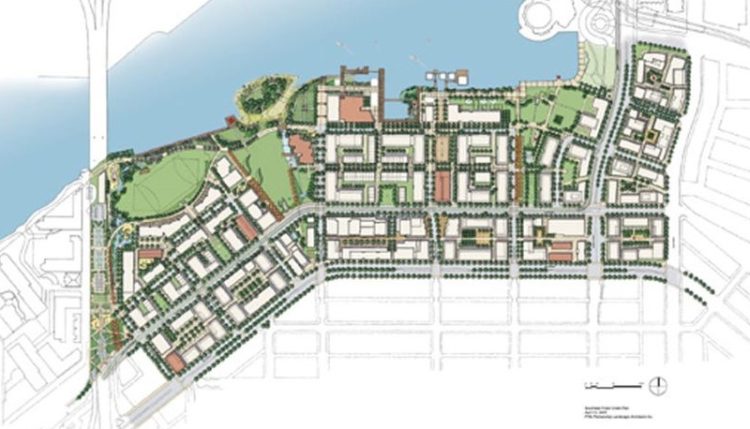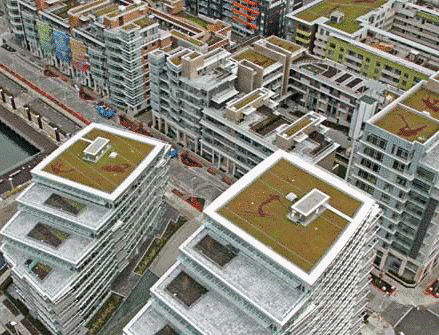
South-East False Creek, Canada
The Southeast False Creek neighbourhood of Vancouver is one of the last remaining brownfield waterfront development sites in the city. Taking up 80 acres and being developed to become home to 16,000 people, this neighbourhood development models how cities can incorporate urban agriculture in high-density, high-rise development areas.
The urban agriculture strategy for Southeast False Creek proposes that there should be a ‘central role of food production in future development of the neighbourhood’. The strategy, which was commissioned in 2002, explores potential for the ‘production, processing and distribution of food.’ The strategy’s aims are to ‘reduce energy and material consumption and the production of wastes, preserve the viability of ecosystems and halt the loss of biodiversity, ensure economic viability and vitality, and strengthen social networks and enhance the quality of life for all in the neighbourhood.’

Southeast False Creek is one of the last waterfront brownfield sites in the city. (Source: Carrot City, 2022)
Suggested ways of incorporating urban agriculture into the neighbourhood are to develop public parks to include food productive spaces as opposed to ornamental ones, to incorporate agriculture into public streets, to encourage schools and day-cares to build gardens, to encourage gardens in private and semi-private yards, for new buildings to be designed with balconies that accommodate food production and to develop and convert rooftops to accommodate food production. It suggests that beekeeping and aquaponics would be valuable and viable in the neighbourhood. As well as this it suggests investing in a commercial greenhouse to operate as a demonstration project. As well as maximising space used for agriculture, the strategy includes a rainwater management system and a neighbourhood energy system. The strategy also implores consideration to develop a shared commercial kitchen and a food incubator.

The city of Vancouver required at least 50% of the developments in the Millennium Water village to have living roofs. (Source: City of Vancouver, 2022)
Millennium Water, the Vancouver Olympic an Paralympic village situated in False Creek showcases how these suggestions can be implemented. The city of Vancouver required 50% of developments in Millennium Water to have living roofs, and over half of the buildings there do. All buildings utilise a system which takes ‘heat from untreated sewage to provide heating and hot water to the village and surrounding neighbourhood.’
The strategy suggests to implement ways of celebrating food production on a local level, by making spaces for farmers markets and to program food-related events in community spaces and schools. The aim for this is to create a culture within the community around food and sustainability. By implementing this strategy as the neighbourhood develops, the city of Vancouver hopes to create a community around food that can serve as a model for future urban developments.

The Millennium Water village is the first development within Southeast False Creek. (Source: Danny Singer, 2022)
For further information see the strategy report here.
https://www.cityfarmer.org/SEFalseCreekFinal.html
For information on Southeast False Creek see City of Vancouver’s website here.
https://vancouver.ca/home-property-development/southeast-false-creek.aspx
Image: The neighbourhood of Southeast False Creek serves as a model for future developments. (Source: City of Vancouver, 2022)
Back to previous page Related design projects
